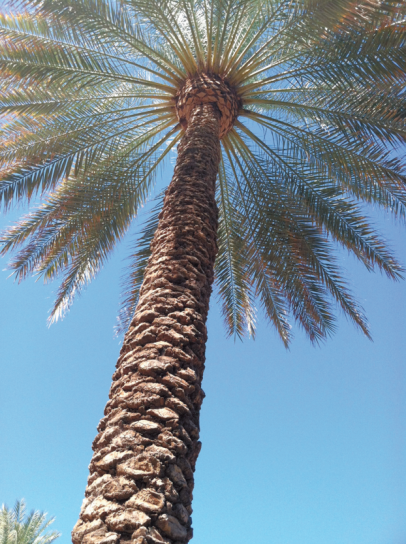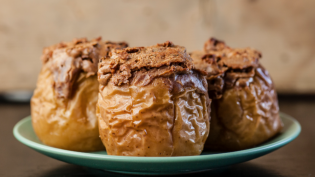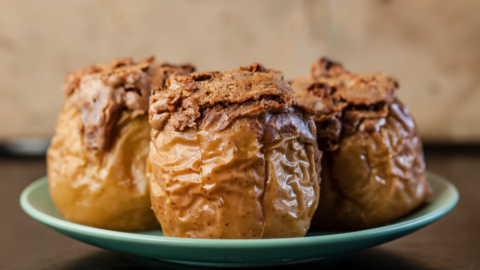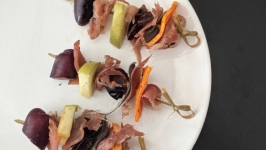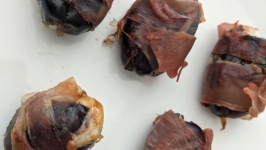Save the Dates
I know what dates taste like. Really, I do. They are hard and bland; don't have much flavor, having been packed for what seems like many decades before they land on my plate.
Or so I thought . . . until I walked up the driveway of date hobbyist Erica Schlather, who eagerly fed me dates called Hayani, Honey, Deglet Nor, Dari and Bread, each with its own distinctive flavor and texture. They are sweet, succulent and addicting. Now I'm completely hooked.
The neighborhood where Schlather lives is called Mountgrove, and encompasses a six-block radius near 47th Street and Lafayette tucked away in a corner of the Arcadia area of Phoenix. It is, first and foremost, a community with deep roots where homes are very often passed from parent to child, and yearly street-side potlucks whisper of the good times of days gone past.
Mountgrove has another claim to fame, however. It is known throughout the world as the only place where the Black Sphinx Date grows.
Within the world of date aficionados, the Black Sphinx tops the charts. It often is described as having a buttery texture, being soft and fleshy with a rich flavor reminiscent of honey. It is no wonder that for almost 80 years people have traveled from all over the world to collect these sweet, nature-made candies. Recognized by Slow Food USA in its Ark of Taste list of 200 foods in danger of extinction, the Sphinx Date has a fascinating history that spans almost a century. Author and ethnobotanist Gary Paul Nabhan calls them "the most endangered date palms in all of North America."
Neighborhood historian Richard Malone lives in his childhood home, which sports several mature, 40-foot-tall Sphinx Date palms. "Our community was brought together by the dates in a time when the easternmost city limit of Phoenix was 32nd Street and Indian School Road," Malone said. "It is almost like living in a vineyard as the trees identify and give 'place' to the neighborhood."
His parents purchased the home in 1956, when the date palms were still being managed by the Sphinx Date Ranch. The rights to harvest these dates were turned over to the landowners in 1966. "These were family trees," he reminisced of his time growing up in Mountgrove, and he shared childhood stories about the weekends his family would spend, during the date harvesting season, picking only the dates that were truly ripe and ready to eat.
The history of the Black Sphinx Date before the 1950s is largely conjecture. It is believed that the Black Sphinx may have descended from an ancient date variety, the Hayani, which was brought to Phoenix from North Africa or the Middle East. In 1919, Robert Metzler discovered a rogue seedling palm at a home in Phoenix. He and his partner Frank Brophy purchased and planted it, along with 10 offshoots, at the Phoenix Date Company garden. Subsequently Frank and John McChesney partnered and created the Sphinx Date Garden, where they spent the next 25 years propagating and growing 450 Black Sphinx Date palms, ultimately planting them in the grove that is now encompassed by Mountgrove.
Date palms are propagated by harvesting the 'offshoots' that grow around the base of the tree. Richard speculates from the size of the date palms in Mountgrove that they were planted in the mid-1940s. Imagine spending 25 years of your life working on a project that literally bore no fruit for that period of time. No immediate gratification there, but ahhhh, the long-term results of their labors are delicious.
As I was finishing up my conversation with Richard he made the offhand comment that there are no male Sphinx Date palms. This makes sense, as all of the Sphinx Date Palms are offshoots of the original 1919 find. So when it comes time to manually pollinate the date trees they have to locate a blooming male Phoenix dactylifera (date palm) and pollinate them that way.
One thing that became clear to me as I spoke to the many people involved in preserving the Black Sphinx is their deep commitment. Schlather is no exception. She grew up in Mountgrove amidst the "date" culture. At an early age, she learned the process of pollinating the 40-foot-tall trees in March, untangling the date clusters in June, bagging each cluster in August and finally harvesting them in October, all of which requires the use of a lift to access the trees. She shared with me how each year she forgets the arduous process: Although by November she swears she will never do it again. . . March arrives and she starts the process all over again.
For more information on the Black Sphinx Date or to taste for yourself, call Erica Schlather at 602-505-7892 or visit her booth out at the Downtown Phoenix Farmers Market
Photo compliments of the Mountgrove Archives
Date Ripening Stages
1–Kimri:
The dates are very small, green. Most of the rapid growth takes place during this stage.
2–Khalal:
The dates reach full size, change color to red, yellow or a combination of both.
3–Rutab:
The dates become soft and lose their bright color.
4–Tamar:
The dates have dried sufficiently to prevent spoiling.


